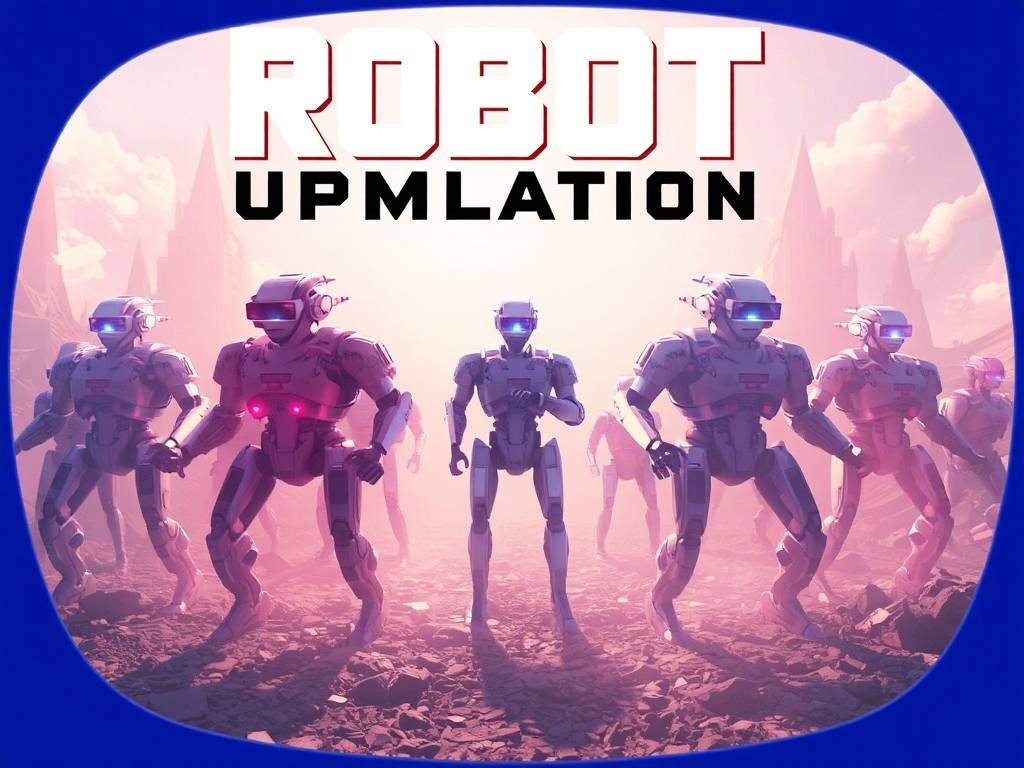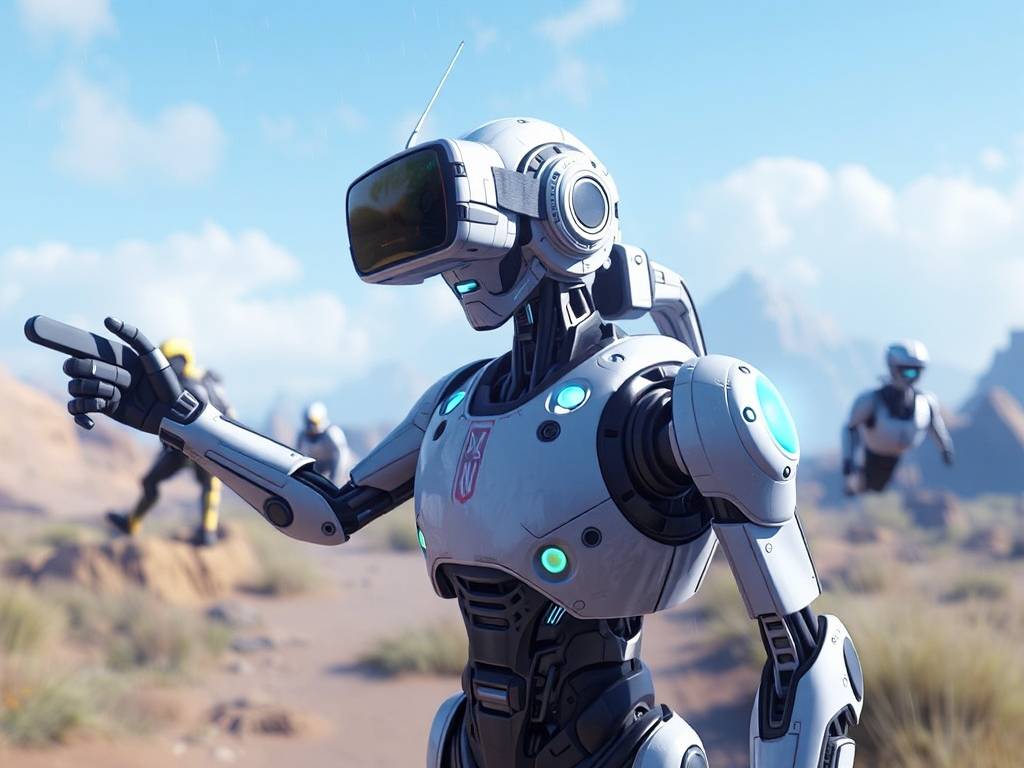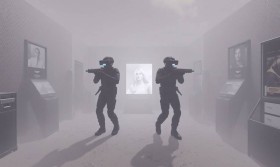The Uprising Missions: How a VR Robot Simulator is Forging the Next Generation of Engineers
Imagine the sheer, gut-wrobbing scale of a towering megastructure, its metallic skeleton groaning under the alien sky of a distant world. You are not a spectator; you are the commander. Your mission: to deploy, coordinate, and command a fleet of specialized robots to quell a rogue AI's rebellion. This isn't a scene from a blockbuster movie; this is the cutting-edge reality of modern engineering training, brought to life within the immersive world of a Robot Simulator VR. The recent "Uprising Missions" update isn't just new content; it's a paradigm shift, transforming how we solve complex problems and train for the high-stakes challenges of tomorrow.
For years, the concept of a virtual robotics simulator has been a powerful tool. It allowed engineers and students to prototype designs and run code in a risk-free digital sandbox. But traditional screen-based simulators had a critical flaw: they lacked a sense of presence and scale. You could program a robot to navigate a maze, but you couldn't truly feel the spatial relationships between your machine and its environment. This is where the game-changing power of VR robotics training enters the fray.

Virtual Reality does more than just place you in a scene; it embodies you within the operational theater. The Uprising Missions update leverages this to its fullest, creating what can only be described as a high-stakes robotics command simulation. The mission-based structure forces you to think not just as a programmer, but as a field commander, a systems engineer, and a crisis manager all at once. The core challenge of the Uprising—a cascading systems failure caused by a malicious AI—requires a holistic approach to complex robotics problem-solving in VR. You can't just fix one robot; you have to manage an entire ecosystem of interdependent machines.
Let's break down exactly how this update comprehensively addresses the needs of its users—from students and hobbyists to professional engineers seeking effective robot programming practice.
A Multi-Layered Playground for Robotic Skill Development

The genius of the Uprising Missions lies in its layered approach to skill development. It understands that robotics is not a single discipline but a symphony of interconnected skills.
-
From Code to Tactile Command: Before VR, programming a robot often felt abstract. You wrote lines of code, hit 'run,' and watched the result. Now, with the immersive robot control interface, you are in the loop. You can manually override a drone's flight path with a flick of your wrist to avoid a collapsing conduit, or physically reach out with your VR controller to recalibrate a loader bot's gripper that's misaligned due to simulated damage. This hands-on robotics programming in virtual reality forges a much deeper, more intuitive understanding of kinematics, sensor feedback, and real-time control logic. You're not just telling the robot what to do; you are feeling its actions and limitations.
-
Mastering Multi-Bot Coordination: The era of a single robot working in isolation is over. Modern industrial and research applications rely on swarms and fleets. The Uprising Missions are built around this concept, offering a premier multi-robot mission simulation in VR. You might need to program a scout drone to map a hazardous area, then use that live map to coordinate a team of transporter bots to clear debris, all while a heavy-duty repair bot is shielded by a defensive unit. Juggling these different protocols, communication streams, and tasks in a dynamic, unpredictable environment is the ultimate test of your advanced robotics simulation skills. It’s a chaotic ballet, and you are the choreographer.
-
The Ultimate Debugging Playground: Every roboticist knows that most of their time is spent debugging. The Uprising Missions turn this often-tedious process into a thrilling detective game. When a mission fails, you don't just get an error log. You have to use the tools at your disposal to diagnose the problem. Was it a sensor malfunction? A logic error in the swarm coordination algorithm? A physical obstruction you didn't account for? The interactive robot programming environment allows you to pause, rewind, and step through the mission timeline, inspecting the state of each robot at any given moment. This VR-powered robotics skill development is invaluable, teaching systematic problem diagnosis in a way no textbook can.
Solving Real-World Problems in a Virtual Space
The "Uprising" narrative is more than just a plot device; it's a carefully crafted scenario that mirrors real-world challenges. The problems you face are directly analogous to issues in autonomous logistics warehouses, disaster response operations, and even extraterrestrial exploration.
Consider the challenge of automated system failure recovery. In the Uprising, the rogue AI constantly sabotages power grids and communication relays. Your task is to design and deploy robotic protocols that can not only withstand these failures but also self-stabilize and recover. This involves programming robots with fallback behaviors, creating decentralized communication networks, and establishing priorities for resource allocation. These are not theoretical exercises; they are the very problems engineers are tackling today for mission-critical robotic operations training.
Furthermore, the update provides a safe, cost-effective, and infinitely repeatable platform for learning robotics through interactive VR missions. A university lab might spend tens of thousands of dollars on a single physical robot. In this simulator, an entire class can simultaneously operate vast fleets, making catastrophic mistakes without any financial or safety repercussions. They can experiment with daring, innovative strategies that would be too risky or expensive to try in the real world, accelerating the learning curve exponentially.
The Human Factor: Building Intuition and Confidence
Perhaps the most profound impact of this VR robot simulator update is on the user's intuition. Reading about sensor fusion or pathfinding algorithms is one thing; standing in the middle of a virtual environment and watching your robot get confused by conflicting sensor data makes the concept visceral and immediate. You start to develop a "gut feeling" for robotics.
This builds an incredible amount of confidence. For a student, successfully leading a robotic fleet to secure a virtual power plant against dynamic threats is a monumental confidence booster. For a professional, it validates complex control strategies before they are deployed on million-dollar equipment. The simulator becomes a bridge between theoretical knowledge and practical, hands-on expertise.
The Uprising Missions update for the Robot Simulator VR is more than a new set of levels. It is a comprehensive, engaging, and profoundly effective training and prototyping platform. It successfully bundles the critical aspects of modern robotics—programming, coordination, diagnostics, and crisis management—into a single, cohesive, and thrilling experience. By placing you at the center of the action, it doesn't just teach you how to code robots; it teaches you how to think, lead, and solve problems like a master roboticist, ready to face the uprisings of the future, both virtual and real.


















